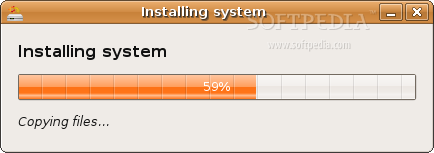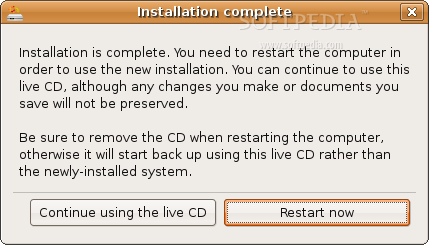Ever wondered what using an operating system other than Windows would be like? Well, there are options! Most people don't realize they can install a completely different operating system on their computer. They trudge along in misery using Windows XP, while they could be using a newer, faster operating system that does everything Windows does and more.
So what is this other option and how much does it cost?
Linux. And it's free.
Free? Well, you say, if it's free it probably isn't that great. You'd be surprised just how polished and fast it runs, even on old hardware.
So where can I get Linux? You can download it from a number of places. Here is a link to the Ubuntu Linux OS downloads page. Ubuntu is one of the better Linux "flavors". Yes, there are a bunch of different Linux "distros" to choose from. Some are made for specialized applications, like audio production, or for use on older hardware. Others, like Ubuntu, are for end users looking for a nice desktop OS.
Once downloaded, you'll need to install it onto your computer. This is where things get tricky and most people will hit snags here. First thing to remember is don't do any harm to your current Windows setup. The best bet is to install Linux onto a separate hard disk, or onto a flash drive for testing purposes. If you aren't too technically savvy, then your best bet is to hook into a local Linux user group, a group of Linux fanatics in your area, who'd probably love to assist you. Do a search for a linux user group in your area here.
Once installed, where do I go for support? Again, this is where Linux shines. Rather than calling Microsoft support and getting some person sitting in a call center in another country reading off of a script, you can tap into the community of Linux users for help. They are usually a very friendly bunch, willing to help you make the jump to Linux. In the past, Linux had a reputation for users who were a little rude towards new users, but lately things are changing and the Ubuntu user forums are especially friendly to new users.
The most important thing is don't give up when you hit a snag. Once you "get it", Linux is a wonderful, powerful alternative to Windows.
sudo apt-get install ufw gufw
After Installation, open it from System -> Administration -> gufw.
Add the rule "Allow From 192.168.0.0/16" by pressing the add button and check the enabled option. Be sure to DENY all incoming connections. That's it, your system is almost secure from the outer world.
2. The Terminal Way: Perform the following steps to configure ufw from the command line:
- Open the terminal by pressing ALT+F2 and type gnome-terminal in the run application window.
- Now, type sudo ufw default DENY in the terminal and press enter.
- Issue the appropriate root password and press enter again, ufw will show you the confirmation.
- Now add the rule by typing sudo ufw ALLOW FROM 192.168.0.0/16 and press enter followed by ufw's confirmation.
- Ufw configured.
man ufw
So, you have seen that Ubuntu is a beautiful linux derivative with lots of features. Regarding the security matter, Ubuntu covers the hard-core security options, if configured properly. It comes both for Client and Server based platforms.
Many of you may not be aware of Ubuntu. Ubuntu is basically a great looking, secure, super-fast intuitive operating system. It is an absolutely free operating system, which powers the laptops, servers, netbooks and desktops.
Originally, Ubuntu comes in a default, Human theme. You can change this default theme by any other available theme as Ubuntu using the Gnome desktop environment. Ubuntu offers many themes and varieties of Gnome themes are available on different websites which you can download for absolutely free. However, there are few websites which need payment for their offered Gnome themes.
Changing a theme on your Ubuntu involve few steps. First you have to download good looking and elegant themes which enhance your desktop with different colors, corners, buttons and scroll bar styles, on your computer. Later, you have to install the chosen theme on your computer by following the given method:
Go to: System à Preferences à Appearance or Theme
Once the "Theme Preferences" window is open, you need to drag the downloaded theme files onto the preferences box so as to make them appear in the list.
Ubuntu themes usually include:
- Controls: These are also known as GTK Themes
- Icons
- Window Borders: These are also called Metacity Themes.
You can find all these in a single theme or some themes include two or only one of them. F you want to check any theme for the presence of these elements, simply go to "Customize" or "Theme Details" button. This feature of Ubuntu allows match and mix elements from different themes.
Following are given some of the popular Ubuntu themes:
- Aqua Gnome Theme: It is an SVG icon theme fro Gnome.
- Aero Theme: It is a good icon theme that gives a good look to your desktop. It is a large file of 60Mb.
- Panther Window Borders: Another theme which is a conjunction to all the above mention icons.
- Windows Vista Aero Icons: It gives your Gnome a Vista look with variable icons.
- Vista Basic: It is a coolest window border theme.
- Glass Icons: This theme is used to achieve a semi-transparent looks.
- Alphacube Metacity: Another cool window border theme.
- Vista Rounded Black Borders: This theme gives your system good-looking Black Vista feel.
- Vista Rounded Focus Borders: Gives Vista look with comparatively smaller borders.
- Clearlooks with a Cherry on Top: A popular window border theme.
- Linsta Orange Black Plastic: If you want to have a Vista theme without having Vista problems, then it is a good choice.
- Linsta Midnight Blue Plastic: It is just different in color from Orange Black, the rest is same to get Vista look.
- Black Cherry: If you want to have a great looking black border, then go for this theme.
- Aqwod: A good-looking icon theme.
- Ubuntu Studio: This theme will give you that Ubuntu Studio look. Go to the Theme Preferences box and click the customize button, there select Ubuntu Studio in window border, Icons and Controls.
After continued success with Ubuntu 7.10 Gutsy Gibbon, the new Ubuntu 8.04 Hardy Heron Linux desktop is sure to make big waves in the Linux distribution pool. As shown in the Ubuntu 8.04 alpha and beta releases, the new Ubuntu 8.04 Hardy Heron release offers many features and enhancements for your desktop including the following and more.
Gnome 2.22 on Ubuntu 8.04 Hardy Heron has a full array of improvements including the new GVFS Back-end Nautilus.
Pulse Audio offers cutting edge sound server technology on Ubuntu 8.04 Hardy Heron.
Ubuntu 8.04 Hardy Heron offers Firefox 3.0 which offers a good collection of new, tested, productive features but is still in beta at the time of this writing.
The Wubi installer allows you to easily install Ubuntu 8.04 Hardy Heron on Windows using an .exe just like any other Windows application.
Along with the new Ubuntu 8.04 Hardy Heron graphic scheme the World Clock Applet is an all around positive for the desktop offering temperature display, location profiles and more.
X.org 7.3 gives Ubuntu 8.04 Hardy Heron users auto-configuration enhancements with the focus placed a minimal configuration file.
Developed by Google during the Summer of Code project and included in the upcoming Ubuntu 8.04 Hardy Heron release, Prefetch will speed up boot-time and common application launching by profiling which files are read in which order and will automatically optimize the order of the data on the hard disk.
A new addition to the Ubuntu 8.04 Hardy Heron application selection is Inkscape, a drawing program that has similar features to popular drawing applications like Illustrator, Freehand, and Corel Draw. Inkscape on Hardy Heron will help complete the graphic design application options on Ubuntu Linux.
Ubuntu 8.04 includes Vinagre which is a useful VNC Client designed for the new GNOME 2.22 desktop.
The Gnome BitTorrent downloader has been replaced by the GTK version of Transmission, a multi-platform BitTorrent client that is light weight and full of features.
Brasero will replace the Serpentine burner on the new Ubuntu desktop. Brasero provides simplicity and a decent set of features
Ubuntu 8.04 includes PolicyKit which is now integrated in the administrative user interface. PolicyKit provides the finest control over permissions while enhancing usability and increasing security.
Throughout most of the 1990's, tech pundits, largely unaware of Linux's potential, dismissed it as a computer hobbyist project, unsuitable for the general public's computing needs. Through the efforts of developers of desktop management systems such as KDE and GNOME, office suite project OpenOffice.org and the Mozilla web browser project, to name only a few, there are now a wide range of applications that run on Linux and it can be used by anyone regardless of his/her knowledge of computers. Those curious to see the capabilities of Linux can download a live CD version called Knoppix . It comes with everything you might need to carry out day-to-day tasks on the computer and it needs no installation. It will run from a CD in a computer capable of booting from the CD drive. Those choosing to continue using Linux can find a variety of versions or "distributions" of Linux that are easy to install, configure and use. Information on these products is available in our distribution section and can be found by selecting the mainstream/general public category.
2.Setinglah koputer you to boot via cd
3.Run your ubuntu live cd
4.If the live cd is running, double-clickthe install icon
5.Then a window will appear
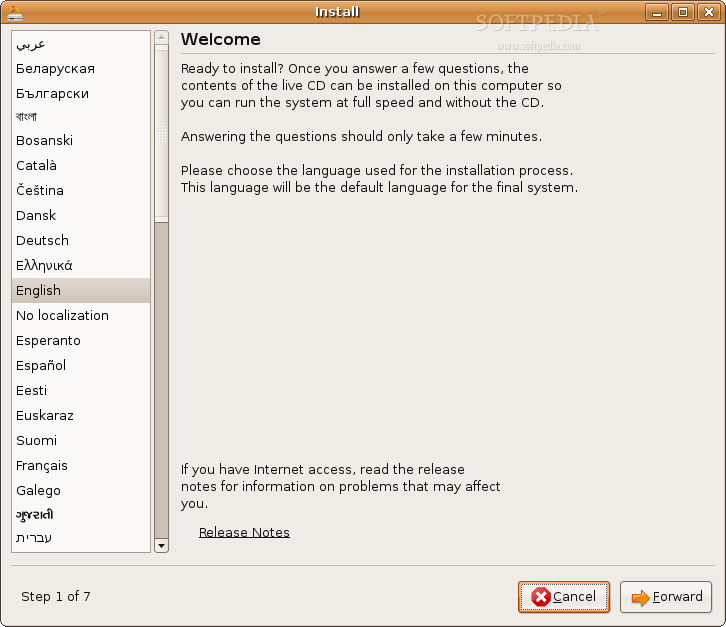
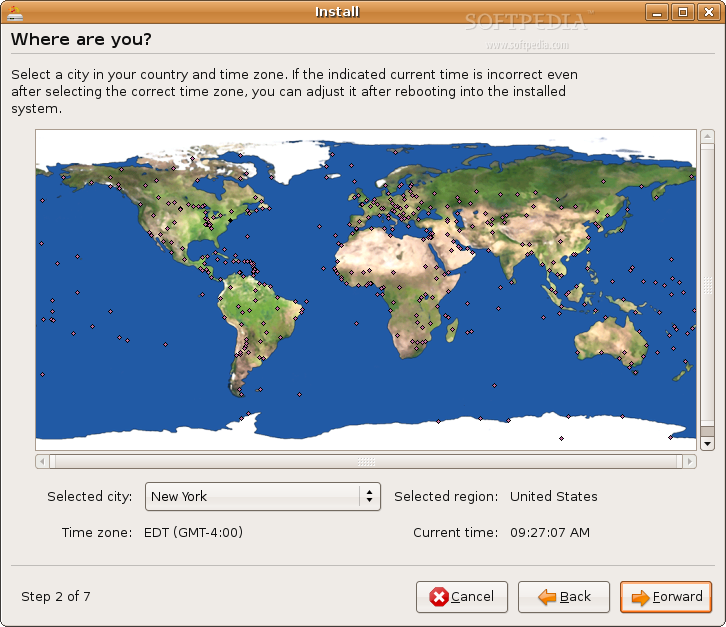
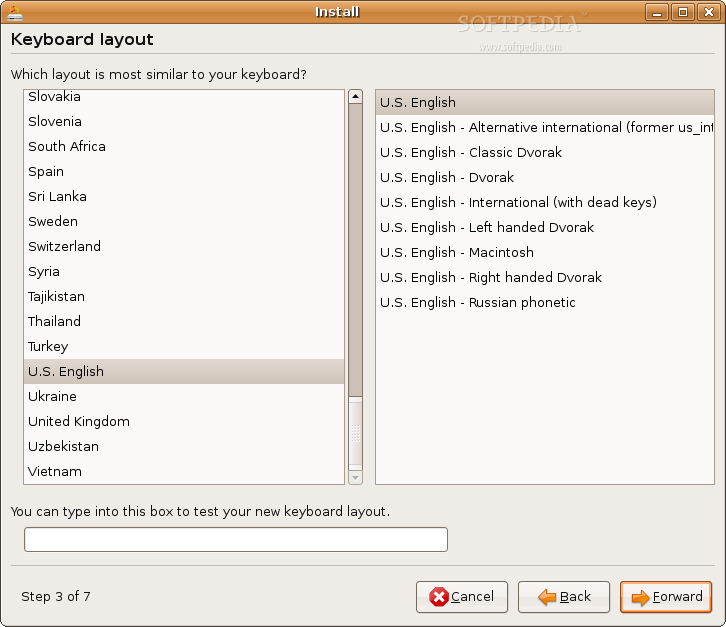
2.If you want to delete your operating system which
3.The third option is to manually (I recommend not
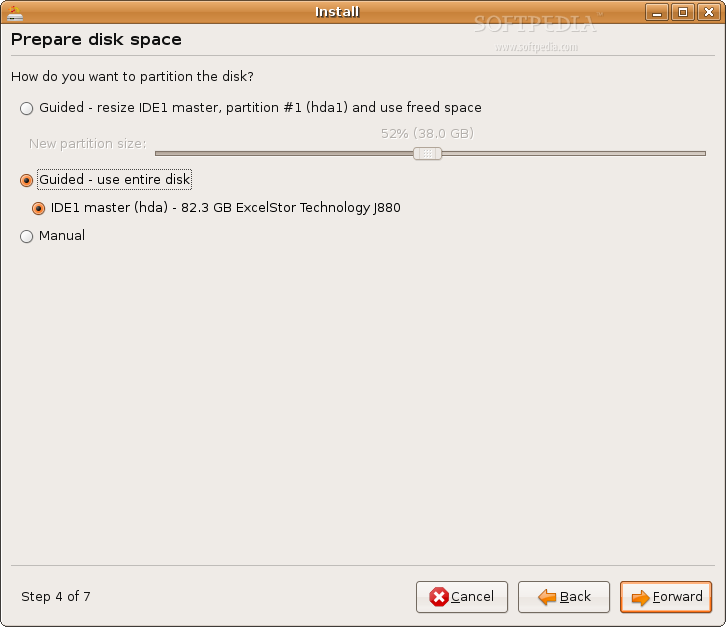
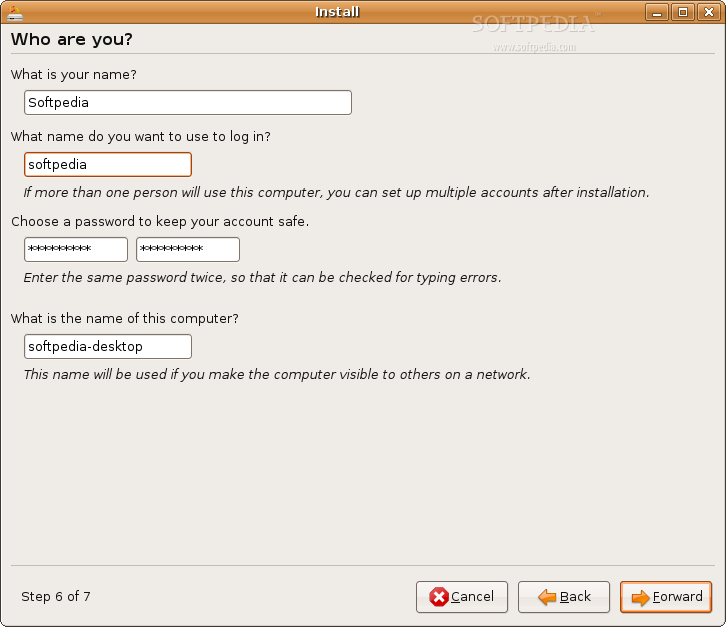
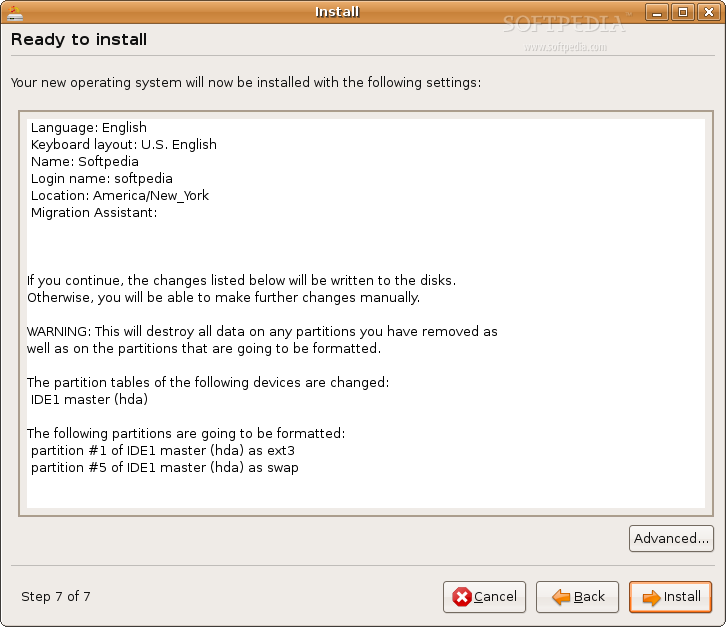
11.A window will appear during the installation processis
